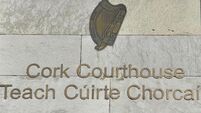President ‘will lose powers’ if Seanad abolished

Save the Seanad campaigners insisted the move was the most “disturbing” element of the Government’s attempted “power grab”.
At present the President can order a referendum on a contentious bill which has been passed by the Dáil, but rejected by the Seanad, if a majority of senators and at least one third of the Dáil asks the head of state not to sign the act into law.













